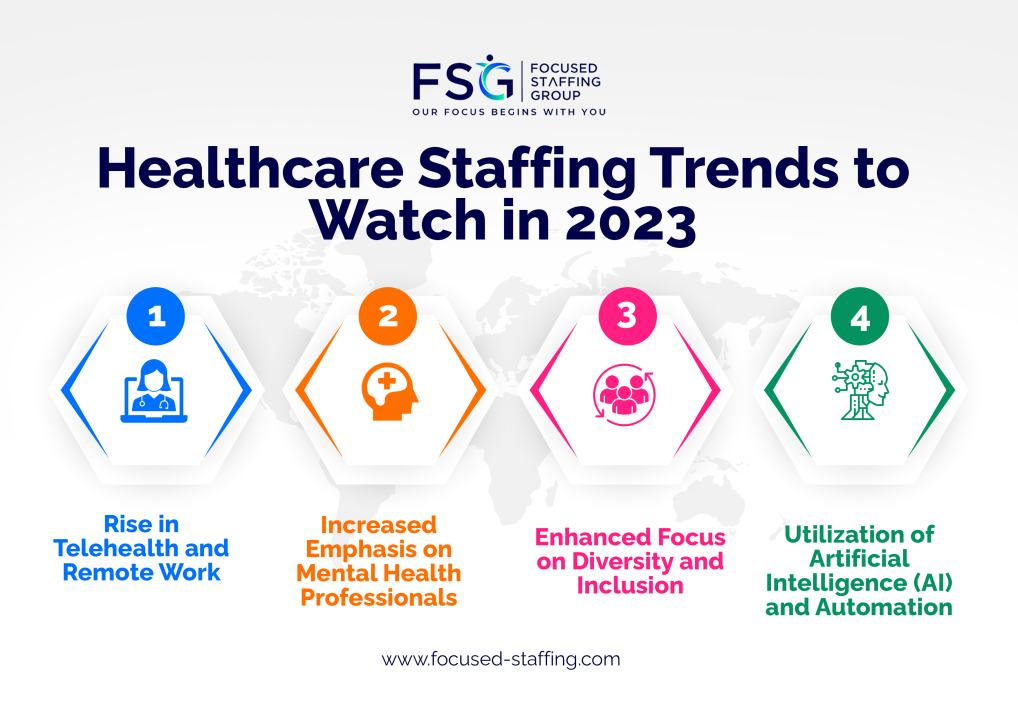The medical care industry is on the cusp of a groundbreaking stage, with arising patterns and innovations reshaping the scene. Staffing in the medical services area, a significant part guaranteeing the accessibility of value care, is no special case. Headways in enlistment procedures, the ascent of telehealth, and the combination of man-made reasoning are only a couple of the patterns reforming how medical services suppliers are staffed. These progressions carry the two potential open doors and difficulties to the business, requesting a proactive position from medical services associations. Underneath, we dig into the key patterns that are molding the fate of medical services staffing.
Advancements in Enrollment Innovation Reshaping Medical care Recruiting
In a period where innovation is progressing dangerously fast, medical care enrollment is seeing an emotional change. New programming and stages are empowering selection representatives to smooth out the employing system and find the best applicants all the more productively. From candidate global positioning frameworks to man-made intelligence-driven examination, innovation is becoming the overwhelming focus in drawing in and holding top ability.
For instance, as the wild rivalry for gifted medical care experts and travel medical services laborers strengthens, offices are progressively collaborating with staffing organizations that have some expertise in the medical services area. Such organizations, for example, the Prolink Staffing Organization, offer a profundity of skill and admittance to a huge pool of competitors, guaranteeing medical services offices can rapidly fill setting up opportunities with qualified people. These organizations are basic to keeping an adaptable and capable labor force receptive to changing industry requests.
Embracing Variety and Social Skill in Medical Services Enlistment
With a different patient populace, there’s a rising requirement for medical services experts who can give socially able consideration. Variety in the medical services labor force improves patient fulfillment as well as drives development by uniting alternate points of view. Therefore, emergency clinics and medical care offices are focusing on comprehensive employing practices and strategies that advance a different scope of foundations, abilities, and encounters.
Social skill preparation is becoming fundamental during the enlistment cycle to get ready staff for a multicultural climate. These drives are restricted to specialists and medical attendants as well as reach out to regulatory and support staff to make a comprehensive air all through the association. Embracing these practices fortifies local area relations and further develops wellbeing results by guaranteeing patients get care delicate to their social necessities.
The Developing Accentuation on Telehealth Administrations and Remote Consideration Jobs
The interest for telehealth administrations has flooded, halfway because of the Coronavirus pandemic which constrained a turn to remote consideration. This has made a requirement for medical services experts who are clinically skilled and in fact capable to convey virtual consideration. The pattern appears to be set to go on with the acknowledgment that telehealth offers accommodation for the two patients and suppliers the same.
Distant jobs are extending inside the business, from virtual medical caretakers and telemedicine doctors to far off persistent checking. These positions expect staff to be knowledgeable in media transmission advancements and OK with giving consideration in a virtual setting. The speed increase of telehealth has prompted a reassessment of sets of expectations and obligations in the medical services area, stressing computerized abilities as much as clinical mastery.

As telehealth keeps on developing, guidelines and repayment approaches are adjusting, which will impact how medical services associations staff their remote consideration administrations. These strategies will probably be a critical driver in the reception and development of telehealth inside the medical services domain, with huge ramifications for labor force arranging and the executives.
As may be obvious, the medical services staffing scene is encountering significant movements driven by innovation, an emphasis on adaptability, and a rising interest for customized and remote consideration. These patterns are molding a future where medical care suppliers are more different, innovatively skilled, and versatile to the changing requirements of the business. Medical services associations that embrace these movements can guarantee they stay at the front line of conveying remarkable patient consideration in a quickly developing climate.






